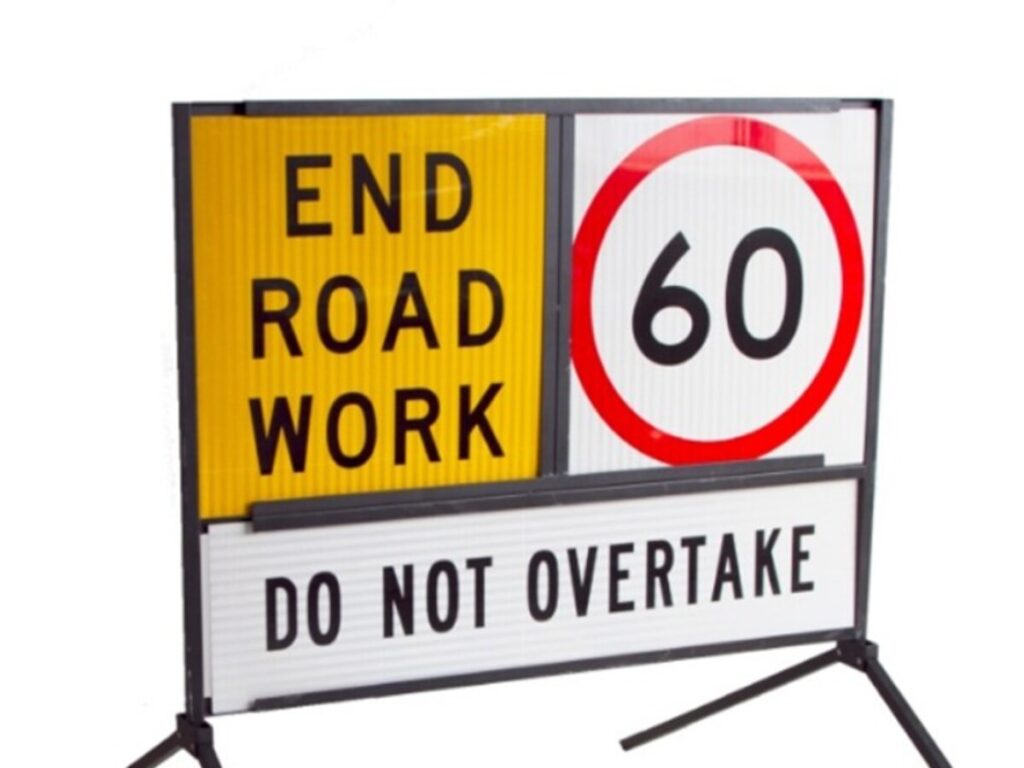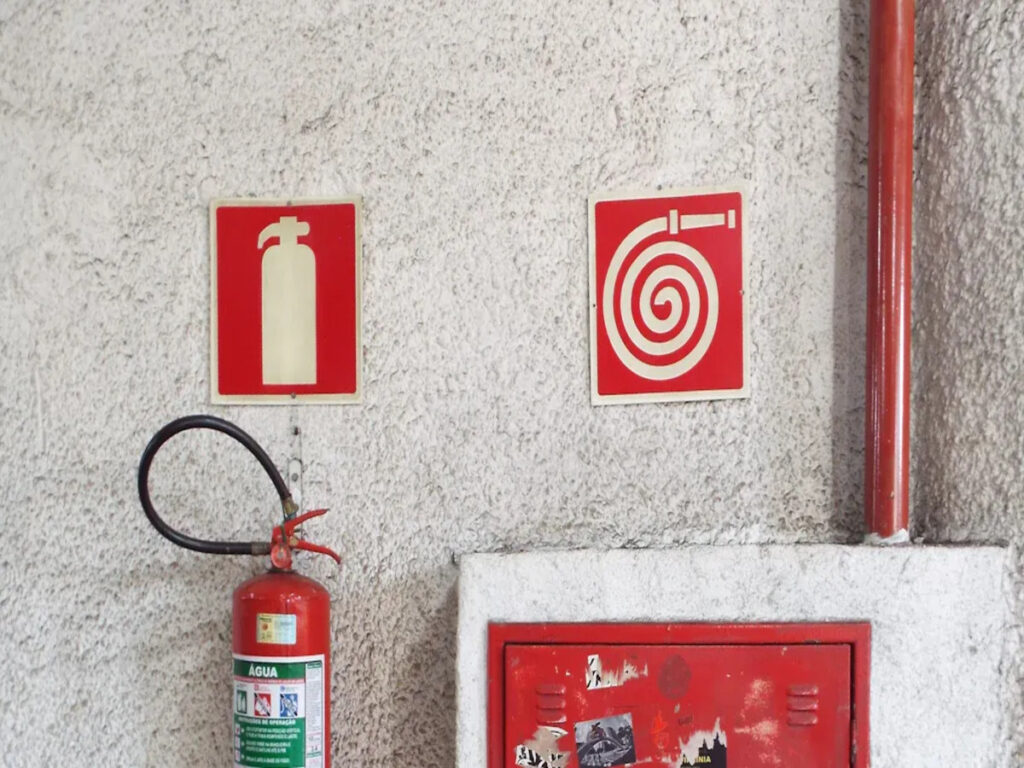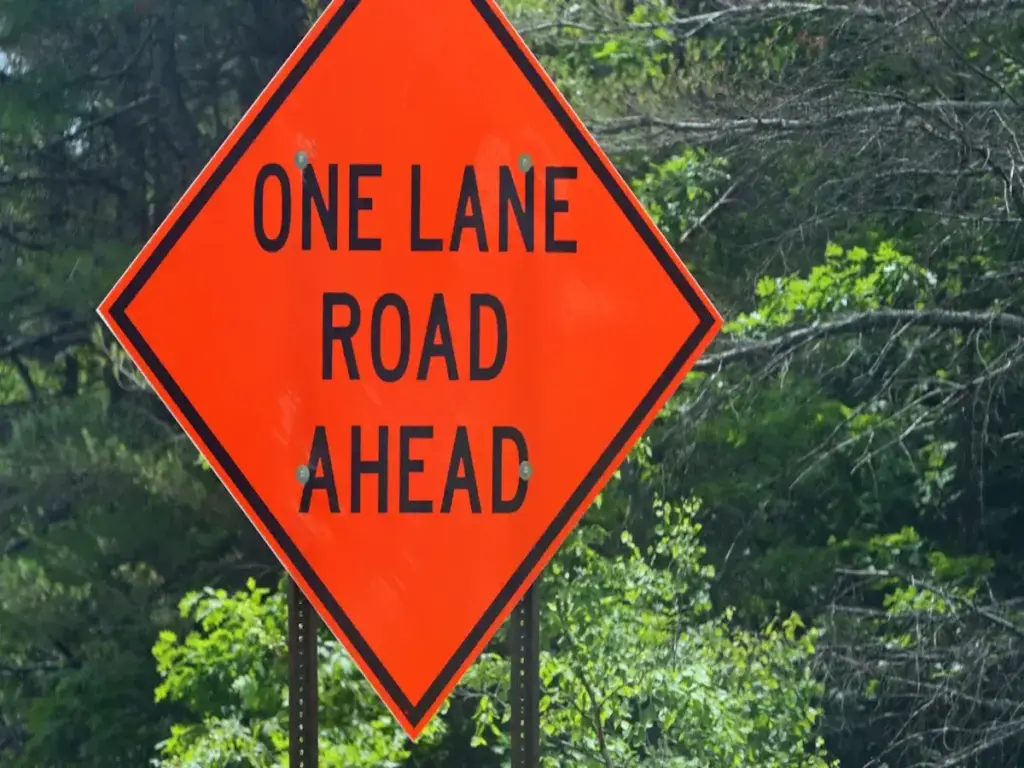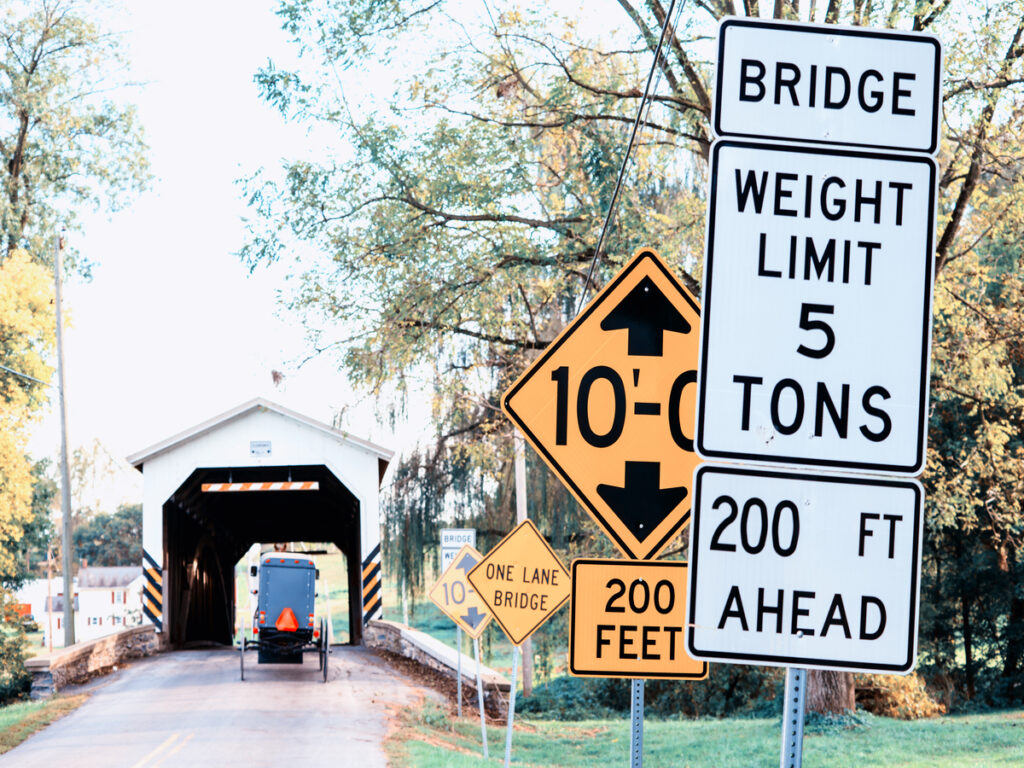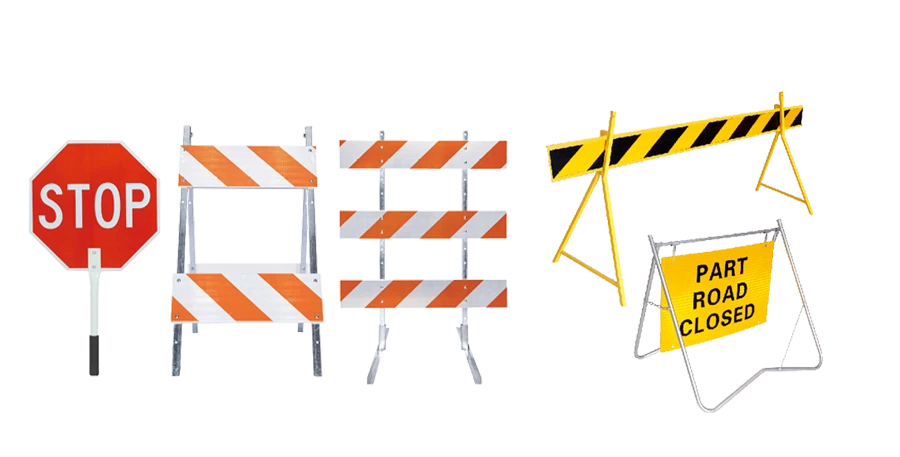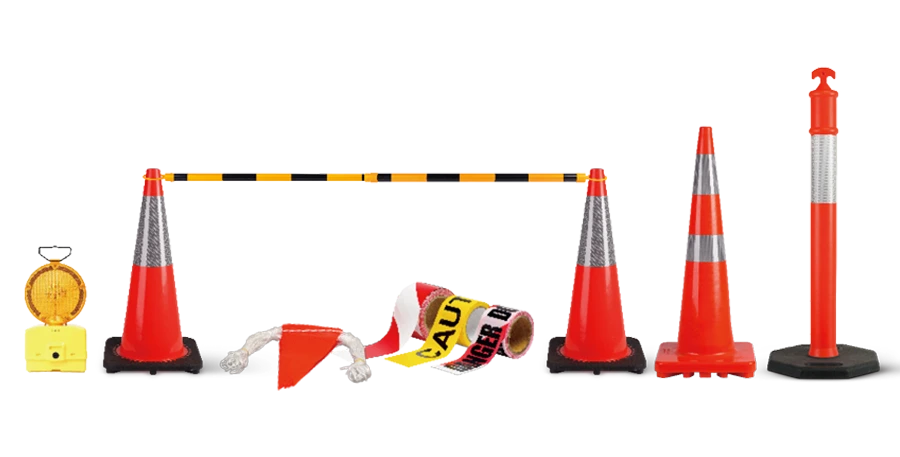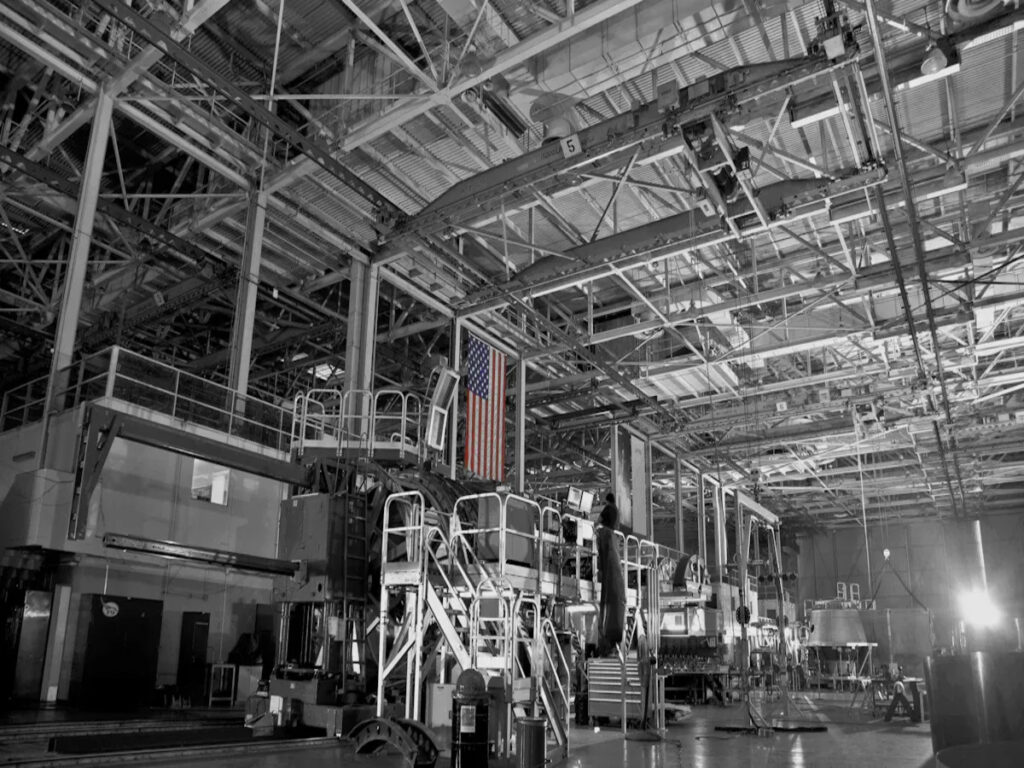
من المهم اختيار المعدن المناسب لأقواس الإشارة المعدنية. يؤثر المعدن على كيفية التعامل مع الأقواس الطقس, تمسك بالوزن, وانظر. للعلامات الزخرفية, الأسلوب والمظهر أكثر أهمية. في المناطق الصناعية, القوة والصلابة هما التركيز الرئيسي. يعد اختيار المعدن الذي يناسب ميزانيتك واحتياجاتك مفتاحًا.
الوجبات الرئيسية
- اختر المعادن بناءً على استخدام العلامة. تبدو العلامات الفاخرة جيدة مع المعادن مثل النحاس أو الحديد المطاوع. علامات قوية تحتاج إلى معادن صعبة مثل الصلب أو الألومنيوم.
- فكر في المدة التي ستستمر فيها. الفولاذ المقاوم للصدأ والألومنيوم لا يصدأون ويعملون في الخارج بشكل جيد.
- تحقق من احتياجات التكلفة والرعاية. الفولاذ المقاوم للصدأ من السهل الحفاظ على نظافة. يبدو النحاس لطيفًا ولكنه يحتاج إلى تلميع للبقاء لامعة.
- تطابق المعدن مع الموقع. بالقرب من المحيط, استخدم المعادن المقاومة للصدأ مثل الفولاذ المقاوم للصدأ أو الألومنيوم. داخل, يمكنك استخدام معادن جميلة مثل النحاس أو البرونز.
- النظر في مدى ثقل العلامة. كبير, العلامات الثقيلة تحتاج إلى معادن قوية مثل الصلب. العلامات الأخف يمكن أن تستخدم الألومنيوم, وهو أسهل في الشنق.
العوامل الرئيسية لاختيار أقواس علامة معدنية
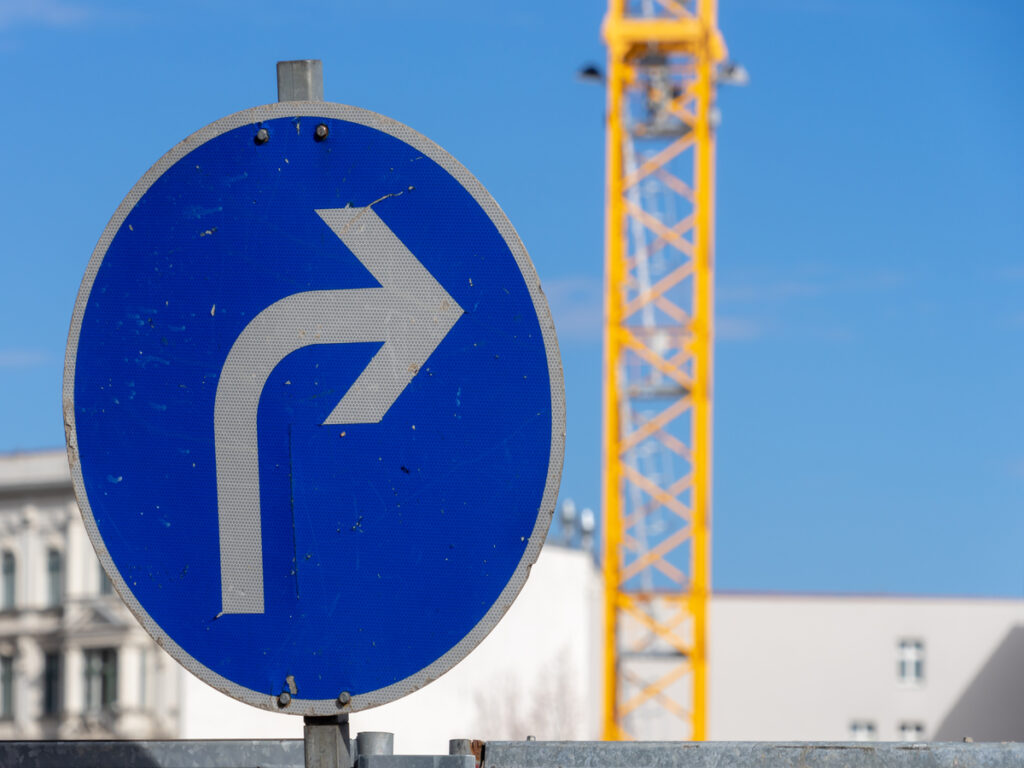
المتانة والقوة
تعتبر المتانة والقوة مهمة للغاية لأقواس الإشارة. أقواس قوية تبقي العلامات آمنة أثناء الرياح أو الأحمال الثقيلة. الفولاذ والفولاذ المقاوم للصدأ رائعان للاستخدام الصناعي لأنها قوية للغاية. يعمل الحديد المطاوع بشكل جيد للعلامات الزخرفية لأنها صعبة وتبدو خيالية.
أقواس سبائك الألومنيوم مثالية لعلامات الوزن الخفيف. الألومنيوم قوي ولكنه خفيف, مما يجعل من السهل التثبيت. إذا تم التعامل مع علاماتك في كثير من الأحيان أو تستخدم بكثافة, اختر المعادن التي تبقى قوية مع مرور الوقت.
مقاومة الطقس والتآكل
أقواس لافتات في الهواء الطلق مواجهة المطر, رطوبة, وتغيرات درجة الحرارة. المعادن التي تقاوم الصدأ تستمر لفترة أطول وتحتاج إلى رعاية أقل. الفولاذ المقاوم للصدأ والألمنيوم رائعان للمناطق الرطبة أو الساحلية لأنها لا تصدأ بسهولة. النحاس والبرونز يشكلون الزنجار, مما يجعلهم أقوى وتبدو أفضل.
تبين الدراسات كيف تؤدي المعادن في ظروف مختلفة. على سبيل المثال, يثبت الأبحاث حول البيئات البحرية أن الألومنيوم والصلب يقاوم أنواعًا معينة من الصدأ بئر. فيما يلي مقارنة بين النتائج:
| عنوان الدراسة | النتائج | المعادن ذات الصلة |
|---|---|---|
| التنبؤ بالتآكل على المدى الطويل لسبائك المعادن في البنية التحتية المادية | اختبارات كيف تقاوم المعادن الصدأ في بيئات مختلفة | فُولاَذ, الألومنيوم, سبائك النحاس |
| تآكل شرائط الصلب العمودية الطويلة في منطقة المد والجزر البحرية | يشرح كيف تتعامل المعادن مع الصدأ في المياه المالحة | فُولاَذ, الألومنيوم |
| مراجعة مقارنة للتآكل المائي للنظارات, السيراميك والمعادن البلورية | يقارن مقاومة الصدأ في المعادن, زجاج, والسيراميك | المعادن, نظارات, السيراميك |
النداء الجمالي
كيف تبدو أقواس علامة مهمة للعلامات الزخرفية. النحاس, البرونز, والنحاس خيارات جميلة. النحاس يضيء بشكل مشرق, بينما يحصل النحاس على نظرة ريفية بمرور الوقت. الحديد المطاوع يعطي أسلوبًا كلاسيكيًا, رائع للتصاميم القديمة أو الفنية.
للعلامات الحديثة, الفولاذ المقاوم للصدأ يبدو ناعمًا ونظيفًا. الألومنيوم مفيد للأقواس المخصصة لأنه خفيف وأنيق. اختر معدنًا يطابق علامةك ويجعله يبدو أفضل.
التكلفة والصيانة
ال يكلف من أقواس الإشارة المعدنية مهمة للغاية. بعض المعادن, مثل الحديد المطاوع والنحاس, باهظة الثمن لأنها تبدو خيالية. آحرون, مثل الصلب والألمنيوم, هي أرخص وقوية للاستخدام اليومي. فكر في ميزانيتك ومدة استمرار المعدن.
صيانة هو أيضا شيء يجب مراعاته. الفولاذ المقاوم للصدأ والألمنيوم بحاجة إلى رعاية قليلة. إنهم لا يصدأون ويظلون قويين في الطقس القاسي. النحاس والبرونز الحصول على الزنجار, الذي يبدو لطيفًا ولكنه قد يحتاج إلى التنظيف أحيانًا. تحتاج الأقواس الفولاذية إلى الطلاء لوقف الصدأ, الذي يضيف إلى تكاليف الصيانة.
الألومنيوم رائع للأقواس المخصصة. إنه خفيف, سهل التشكيل, وبسيطة لرعاية. النحاس والبرونز جميلان للأقواس الزخرفية ولكن قد تحتاج إلى تلميع للبقاء لامعة. للأقواس الصناعية, الفولاذ المجلفن أو الفولاذ المقاوم للصدأ يعمل بشكل جيد مع صيانة منخفضة.
نصيحة: اختر معدنًا يناسب ميزانيتك ويحتاج إلى رعاية أقل. هذا يبقي أقواسك تبدو جيدة وتعمل بشكل جيد لفترة طويلة.
الاحتياجات البيئية والهيكلية
حيث تضع قوسين الخاص بك يهم عند اختيار المعدن. تحتاج المناطق الساحلية ذات الهواء المالح إلى معادن مثل الفولاذ المقاوم للصدأ أو الألومنيوم الذي يقاوم الصدأ. في الداخل, المعادن مثل النحاس أو النحاس مفيد للزينة.
يؤثر حجم ووزن علاماتك أيضًا على اختيارك. العلامات الثقيلة تحتاج إلى معادن قوية مثل الصلب أو التيتانيوم. الألومنيوم يعمل بشكل جيد لعلامات أخف وزنا. يمكن صنع أقواس مخصصة لتناسب احتياجات علامتك, إبقائهم آمنين ومتين.
التعرض للطقس شيء آخر يجب التفكير فيه. أقواس في الهواء الطلق مواجهة المطر, رياح, وتغيرات درجة الحرارة. الفولاذ المقاوم للصدأ والألومنيوم يتعاملون مع هذه الظروف بشكل جيد. للعلامات الزخرفية في الداخل, يضيف الحديد المطاوع أو البرونز نمطًا دون فقدان القوة.
ملحوظة: اختر دائمًا المعدن الذي يطابق البيئة ووزن علامةك. هذا يساعد أقواسك على الاستمرار لفترة أطول وتعمل بشكل أفضل.
أفضل المعادن لأقواس علامة معدنية زخرفية
الحديد المطاوع
الحديد المطاوع هو خيار رائع للأقواس الزخرفية. إنه قوي ويمكن تشكيله في التصميمات الفاخرة. هذا يجعلها مثالية لإضافة الأسلوب إلى أي مكان. الحديد المطاوع لا يتشقق بسهولة, لذلك يستمر وقت طويل.
مظهره الكلاسيكي يعمل بشكل جيد للتصميمات القديمة أو القديمة. يمكنك استخدامه للمباني التاريخية أو واجهات المتاجر الفاخرة. يبقى الحديد المطاوع قاسيًا أثناء المظهر الجميل, مما يجعله خيارًا يمكن الاعتماد عليه للأقواس الزخرفية.
النحاس
النحاس هو معدن جيد آخر للأقواس الزخرفية. لديها لامعة, اللون الذهبي الذي يبدو أنيقًا. تحظى النحاس بشعبية منذ العصر الفيكتوري بسبب جمالها. لا يصدأ بسهولة, لذلك يعمل في الداخل والخارج.
إليكم السبب في أن النحاس هو خيار ذكي للأقواس الزخرفية:
- إن تألقها الذهبي يجعل التصميمات تبدو رائعة وأنيقة.
- إنه ناعم بما يكفي لإنشاء أنماط مفصلة للتصميمات المخصصة.
- يبقى النحاس قويًا في بيئات مختلفة مع مرور الوقت.
إذا كنت تريد معدنًا جميلًا ومفيد على حد سواء, النحاس هو اختيار رائع للأقواس الزخرفية.
البرونز
البرونز هو معدن قوي وأنيق للأقواس الزخرفية. غالبًا ما يتم استخدامه في المباني لأشياء مثل إطارات الأبواب والأجهزة. متأخر , بعد فوات الوقت, البرونز يحصل على الزنجار, الذي يعطيها نظرة فريدة من العمر.
البرونز يعمل بشكل جيد في الهواء الطلق, حتى في الظروف الصعبة مثل الهواء المالح أو المناطق الريفية. للحفاظ على تألقها, ستحتاج إلى تلميعها أو استخدام الطلاء الخاص. حتى مع هذه الرعاية, يبقى البرونز متينًا ويقاوم الصدأ, مما يجعلها خيارًا قويًا.
إن اختيار البرونز لأقواسك يعني اختيار معدن صعب وجميل على حد سواء. يضيف سحر إلى علاماتك أثناء الوقوف في مواجهة تحديات الطقس, مما يجعلها خيارًا أعلى للاستخدام الزخرفي.
نحاس
نحاس هو معدن رائع لأقواس العلامات الزخرفية. يتغير بمرور الوقت, تشكيل الزنجار الذي يبدو قديمًا وفنيًا. هذا يجعلها مثالية للأماكن الفاخرة أو الإبداعية. يمكن تشكيل النحاس في أقواس فريدة من نوعها تبرز في الإعدادات الأنيقة.
النحاس لا يصدأ بسهولة, وهي ميزة كبيرة. يعمل بشكل جيد في الخارج, حتى في المناطق الرطبة أو الملوثة. لكن النحاس ناعم, لذلك ليس قويًا بما يكفي للاستخدام الشاق. نعومةها مفيدة لصنع تصاميم مفصلة ومتوهجة.
لماذا تختار النحاس للأقواس الزخرفية?
- مظهر فريد: يحصل النحاس على زنجار خضراء, إضافة سحر وأسلوب.
- مقاومة التآكل: إنه يتعامل مع الرطوبة والطقس بشكل جيد, البقاء دائم.
- قابلية: إن نعومةها تجعل من السهل تشكيلها في تصميمات مخصصة.
فيما يلي جدول يقارن النحاس مع المعادن الأخرى المستخدمة في أقواس زخرفية:
| ملكية | نحاس | النحاس | البرونز |
|---|---|---|---|
| الموصلية | ممتاز | جيد | جيد |
| مقاومة التآكل | عالي | معتدل | عالي |
| قوة | محدودة بسبب النعومة | تعزيز بسبب صناعة السبائك | جيد بسبب السبائك |
النحاس هو الأفضل للعلامات الخفيفة إلى المتوسطة حيث تبدو أكثر أهمية. إذا كنت تريد معدنًا جميلًا وقويًا, النحاس هو خيار ذكي للأقواس الزخرفية.
نصيحة: استخدم أقواس النحاس في الأماكن التي يضيف فيها الزنجار الجمال, مثل الحدائق, واجهات المتاجر الفاخرة, أو المساحات الفنية.
الألومنيوم (للاستخدام الزخرفي خفيف الوزن)
الألومنيوم هو خيار أفضل لأقواس علامة زخرفية خفيفة الوزن. إنه خفيف, مما يجعل من السهل التثبيت والتعامل. يعمل الألومنيوم بشكل جيد للتصميمات المخصصة الأنيقة والمفيدة.
الألومنيوم لا يصدأ, مما يجعلها رائعة للاستخدام في الهواء الطلق. إنه مثالي للمناطق الساحلية حيث يمكن للهواء المالح أن يضر المعادن الأخرى. مظهرها السلس يناسب التصميمات الحديثة والبسيطة, مما يجعلها شائعة لعلامات المدينة.
فوائد الألومنيوم للأقواس الزخرفية
- خفيف الوزن: الألومنيوم سهل التثبيت, حتى للحصول على علامات أكبر.
- مقاومة التآكل: إنه يقاوم أضرار الصدأ والطقس, يستمر وقت طويل.
- براعة: يمكن تشكيل الألومنيوم في العديد من التصميمات, من الأساسي إلى الهوى.
إليك طاولة تقارن الألومنيوم مع المعادن الأخرى للاستخدام الزخرفي:
| معدن | نقاط القوة | نقاط الضعف |
|---|---|---|
| نحاس | الموصلية الممتازة, مقاومة التآكل | قوة محدودة بسبب النعومة |
| النحاس | القوة المحسنة, النداء الجمالي | ن/أ |
| البرونز | مقاومة تآكل جيدة, متانة | ن/أ |
| الألومنيوم | خفيف الوزن, مقاوم للتآكل | قوة أقل مقارنة بالصلب |
الألومنيوم رائع للأقواس المخصصة في المدن أو الأماكن التي تحتاج إلى خيارات خفيفة الوزن. إنه متين وأنيق, مما يجعله اختيارًا ذكيًا للاستخدام الزخرفي.
ملحوظة: أقواس الألومنيوم مثالية للتصميمات الحديثة التي تركز على البساطة والفائدة.
أفضل المعادن لأقواس لافتات المعادن الصناعية
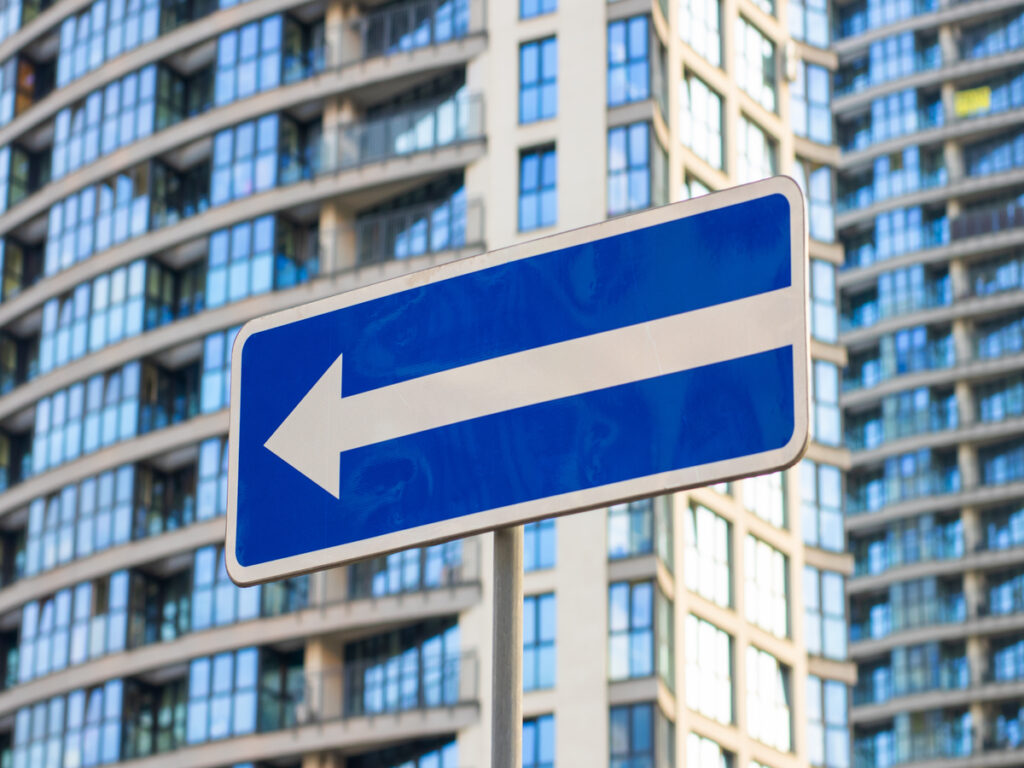
فُولاَذ (بما في ذلك الصلب المجلفن)
الصلب معدن قوي ويمكن الاعتماد عليه للأقواس الصناعية. يحمل علامات ثقيلة بشكل آمن, حتى في الظروف الصعبة. الفولاذ المجلفن لديه طلاء الزنك يحميه من الصدأ. هذا الطلاء يبقي المعدن في مأمن من الرطوبة والمواد الكيميائية الضارة, جعله يدوم لفترة أطول.
لماذا اختيار الصلب للاستخدام الصناعي?
- قوة: يدعم الصلب علامات ثقيلة دون الانحناء أو كسر.
- مقاومة التآكل: يبقى الصلب المجلفن خاليًا من الصدأ في البيئات الرطبة.
- فعالية التكلفة: الصلب بأسعار معقولة وسهلة العثور عليها للمشاريع.
يعمل الصلب بشكل جيد لعلامات الطرق السريعة, علامات السلامة على الطرق, والإعدادات في الهواء الطلق. إن قوتها وتكلفة منخفضة تجعلها خيارًا شائعًا للأقواس الصناعية.
لمعرفة المزيد حول سبب تقدير أقواس علامة الصلب من أجل متانتها وقوتها, تحقق من دليلنا التفصيلي: أقواس علامة الصلب: أوضح المتانة والقوة.
الفولاذ المقاوم للصدأ
الفولاذ المقاوم للصدأ هو معدن رائع آخر للأقواس الصناعية. إنه قوي, لا يصدأ بسهولة, وتبدو نظيفة. هذا المعدن يعمل بشكل جيد في أماكن مع سوء الاحوال الجوية, الهواء المالح, أو التلوث.
فوائد الفولاذ المقاوم للصدأ للأقواس الصناعية
- متانة: يعالج الفولاذ المقاوم للصدأ أحمالًا ثقيلة وظروف صعبة.
- مقاومة التآكل: يقاوم الصدأ, حتى في المناطق الساحلية أو الملوثة.
- صيانة منخفضة: يحتاج الفولاذ المقاوم للصدأ إلى رعاية قليلة, توفير الوقت والمال.
تشير الدراسات. يتم استخدامه في أقواس متميزة, الدرابزين, وعلامات في المصانع والمناطق الساحلية. مزيج من القوة والأناقة يجعلها مفيدة للغاية.
نصيحة: للبيئات القاسية, الفولاذ المقاوم للصدأ قوي ويقاوم الصدأ أفضل من معظم المعادن.
سبائك الألومنيوم
سبائك الألومنيوم خفيفة الوزن ولكنها قوية, جعلها رائعة للأقواس الصناعية. لا يصدأون بسهولة, لذلك فهي مثالية للاستخدام في الهواء الطلق أو الساحلي. يمكن تشكيل هذه السبائك ولحامها في تصميمات مخصصة لتناسب احتياجاتك.
مزايا سبائك الألومنيوم
| ميزة | فائدة |
|---|---|
| ليونة عالية | سهل التشكيل دون كسر. |
| قابلية لحام ممتازة | سهل اللحام للتصميمات المخصصة. |
| مقاومة تآكل عالية | يبقى خالية من الصدأ في المناطق الرطبة أو المالحة. |
| مادة قوية | يتعامل مع الأحمال المتوسطة إلى الثقيلة بشكل جيد. |
يستخدم الألومنيوم للأقواس الصناعية, درابزين, وعلامات خفيفة الوزن. إنه متعدد الاستخدامات ويعمل بشكل جيد مع اللافتات الحضرية أو المشاريع المتوسطة الوزن.
ملحوظة: سبائك الألومنيوم مثالية للأماكن التي تحتاج إلى أقواس خفيفة الوزن ومقاومة للصدأ.
التيتانيوم (للاستخدامات الخاصة)
التيتانيوم هو معدن قوي جدا وصعب لأقواس لافتات. إنه خفيف ولكنه متين للغاية, مما يجعلها رائعة للوظائف التي تحتاج إلى قوة ولا صدأ. غالبًا ما يستخدم التيتانيوم في صناعات مثل الطائرات, قوارب, والنباتات الكيميائية حيث تكون هناك حاجة إلى أداء مرتفع.
لماذا تختار التيتانيوم لأقواس العلامات الصناعية?
لدى التيتانيوم ميزات خاصة تجعلها أفضل من المعادن الأخرى. إليكم السبب في أنه خيار ذكي لبعض الأقواس:
- قوة مذهلة: التيتانيوم يحمل علامات ثقيلة دون الانحناء أو كسر. إنه لأمر رائع للعلامات الكبيرة في أماكن صعبة.
- مقاومة الصدأ: التيتانيوم لا يصدأ أو يتضرر من المواد الكيميائية, المياه المالحة, أو الطقس السيئ. إنه مثالي للمناطق الساحلية أو المصانع.
- خفيف الوزن: على الرغم من أنه قوي, التيتانيوم أخف من الصلب. هذا يجعل من السهل تثبيت وتقليل وزن الإعداد الخاص بك.
يتم استخدام أقواس التيتانيوم حيث قد تفشل المعادن الأخرى. على سبيل المثال, إنهم يعملون بشكل جيد بالقرب من المحيط حيث يمكن للهواء المالح والماء تدمير الفولاذ أو الألمنيوم. يبقى التيتانيوم قويًا ويمكن الاعتماد عليه لفترة طويلة.
كيف يتم استخدام التيتانيوم في أقواس علامة
التيتانيوم ليس فقط للوظائف الشاقة. إنه أمر رائع أيضًا للمشاريع التي تحتاج إلى دقة وقوة دائمة. هنا الاستخدامات الشائعة:
| حيث يتم استخدامه | لماذا التيتانيوم يعمل بشكل جيد |
|---|---|
| العلامات الساحلية | يبقى قويا ضد المياه المالحة والطقس السيئ |
| النباتات الكيميائية | يعالج المواد الكيميائية والحرارة العالية بسهولة |
| مباني الطائرات | خفيف ولكنه قوي للهياكل الكبيرة |
| هياكل المدينة | صعبة على العلامات والسور المعدني |
غالبًا ما يتم دمج أقواس التيتانيوم مع مواد قوية مثل الفولاذ المقاوم للصدأ أو الألومنيوم. هذا يجعل الهياكل تدوم لسنوات عديدة. قدرة التيتانيوم على التعامل مع الظروف القاسية تجعلها خيارًا أفضل لتلبية الاحتياجات الصناعية الخاصة.
يجب أن تستخدم التيتانيوم?
إذا كان مشروعك يواجه طقسًا قاسيًا أو يحتاج إلى قوة إضافية, التيتانيوم اختيار رائع. إنه جيد بشكل خاص للعلامات الخارجية بالقرب من المحيط أو في المناطق الصناعية. يكلف التيتانيوم أكثر من المعادن الأخرى, لكنه يستمر لفترة أطول ويوفر المال على الإصلاحات. إنه يستحق الاستثمار في الوظائف الصعبة.
نصيحة: اختر التيتانيوم للمشاريع التي تحتاج إلى أقواس قوية ومقاومة للصدأ. إنه خيار ذكي للوظائف التي تحتاج إلى التعامل مع الظروف الصعبة.
جدول المقارنة: الزخرفية مقابل. المعادن الصناعية
مقارنة المعادن عن طريق الاستخدام, قوة, مقاومة الصدأ, تبدو, والاستخدامات الشائعة
اختيار المعدن المناسب ل توقيع قوسين يعني معرفة خلافاتهم. تركز المعادن الزخرفية على الأناقة, في حين أن المعادن الصناعية تدور حول القوة. فيما يلي جدول يوضح الميزات الرئيسية لكل نوع.
| معدن | استخدم النوع | قوة | مقاومة الصدأ | تبدو | الاستخدامات الشائعة |
|---|---|---|---|---|---|
| الحديد المطاوع | زخرفية | قوي | واسطة | كلاسيكي, كلاسيكي | المباني القديمة, واجهات المتاجر الفاخرة |
| النحاس | زخرفية | واسطة | جيد | لامع, مصقول | علامات داخلية, لهجات أنيقة |
| البرونز | زخرفية | واسطة | عالي | دافيء, نظرة طويلة | آثار, علامات في الهواء الطلق الراقية |
| نحاس | زخرفية | واسطة | عالي | ريفي, الزنجار الفني | حدائق, عروض إبداعية |
| الألومنيوم | الزخرفية/الصناعية | متوسطة القوية | جيد | ضوء, حديث | علامات المدينة, أقواس خفيفة الوزن مخصصة |
| فُولاَذ | صناعي | قوي جدا | يحتاج الطلاء | عملي | علامات الطريق, الإعدادات الشاقة |
| الفولاذ المقاوم للصدأ | صناعي | قوي | ممتاز | سلس, حديث | المناطق الساحلية, بيئات صعبة |
| التيتانيوم | صناعي | قوي جدا | ممتاز | غالي, معدني | المواقع الصناعية الخاصة |
نصيحة: اختر المعادن مثل النحاس, البرونز, أو النحاس للأقواس الزخرفية. للأقواس الصناعية, اختر الفولاذ المقاوم للصدأ أو التيتانيوم للقوة ومقاومة الصدأ.
نقاط مهمة
- المعادن الزخرفية: هذه تركز على الجمال والتصميم. المعادن مثل الحديد المطاوع, النحاس, البرونز, والنحاس يجعل العلامات تبدو رائعة. إنهم يعملون بشكل أفضل في الداخل أو في ظروف خفيفة معتدلة.
- المعادن الصناعية: هذه تركز على المتانة والأداء الدائم. فُولاَذ, الفولاذ المقاوم للصدأ, ويتعامل التيتانيوم مع أحمال ثقيلة وسوء الأحوال الجوية. الألومنيوم قوي ولكنه خفيف, مما يجعلها متعددة الاستخدامات.
إن معرفة هذه الاختلافات تساعدك على اختيار أفضل معدن لاحتياجاتك وموقعك.
يعتمد اختيار المعدن المناسب لأقواس الإشارة على ما تحتاجه. للعلامات الزخرفية, المعادن مثل الحديد المطاوع, النحاس, البرونز, والنحاس يبدو رائعًا. الحديد المطاوع يعطي شعورًا قديمًا. النحاس والبرونز لامعة, التشطيبات الدافئة. يتغير النحاس بمرور الوقت, إنشاء مظهر خضراء فريد مثالي للأماكن الفنية.
للعلامات الصناعية, الفولاذ المقاوم للصدأ, الصلب المجلفن, سبائك الألومنيوم, التيتانيوم قوي وطويل الأمد. الفولاذ المقاوم للصدأ لا يصدأ في الطقس السيئ. الفولاذ المجلفن مفيد للعلامات الخارجية الثقيلة. سبائك الألومنيوم خفيفة ولكنها قوية, رائع لسكور المدينة والعلامات المتوسطة. التيتانيوم صعب للغاية ويعمل بشكل جيد بالقرب من المحيط أو في المصانع.
إذا كنت تريد أقواس زخرفية, اختر المعادن التي تجعل مساحتك تبدو أفضل. للأقواس الصناعية, اختر المواد التي تبقى قوية في الظروف الصعبة. العثور على المزيج الصحيح من الأناقة, قوة, والتكلفة تبقي علاماتك آمنة وجذابة.
في أوبترافيك, ملكنا أقواس علامة المرور للبيع مصممة خصيصًا لعلامات السلامة المرورية, ضمان المتانة والسلامة يمكنك الوثوق بها لكل عملية تثبيت.
التعليمات
ما هو أفضل معدن لأقواس الإشارة الخارجية?
الفولاذ المقاوم للصدأ رائع للأقواس الخارجية. إنه لا يصدأ ويتعامل مع الطقس السيئ جيدًا. الألومنيوم هو خيار جيد آخر لعلامات الضوء بالقرب من الساحل. كلا المعادن يدوم وقتًا طويلاً ويحتاجان إلى رعاية قليلة.
يمكن استخدام المعادن المزخرفة مثل النحاس أو النحاس في الهواء الطلق?
نعم, العمل النحاسي والنحاس في الهواء الطلق. يحصل النحاس على الزنجار الذي يتوقف الصدأ. يحارب النحاس التآكل ولكن قد يحتاج إلى تلميع للبقاء لامع. كل من المعادن تجعل المساحات الخارجية تبدو خيالية.
كيف أختار بين المعادن الزخرفية والصناعية?
فكر فيما تحتاجه. للنظر, اختر المعادن الزخرفية مثل الحديد المطاوع أو البرونز. للقوة, اذهب مع المعادن الصناعية مثل الصلب أو التيتانيوم. تحقق من بيئتك, توقيع الوزن, والميزانية لاتخاذ قرار.
هل سبائك الألومنيوم قوية بما يكفي للأقواس الصناعية?
نعم, سبائك الألومنيوم قوية وخفيفة. إنهم يحملون علامات متوسطة إلى ثقيلة ولا يصدأون. هذه السبائك رائعة لعلامات المدينة, درابزين, والإعدادات الخارجية حيث يهم الوزن.
هل تتطلب أقواس التوقيع صيانة منتظمة?
بعض المعادن تحتاج إلى رعاية. الفولاذ المقاوم للصدأ والألمنيوم بحاجة إلى القليل جدا من الصيانة. قد يحتاج النحاس والبرونز إلى تلميع للبقاء لامعة. تحتاج الأقواس الفولاذية إلى الطلاء لوقف الصدأ. اختر معدنًا يتطابق مع مقدار الرعاية التي تريد تقديمها.

